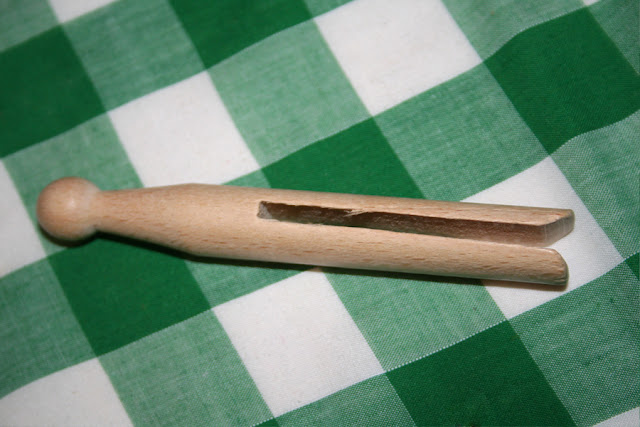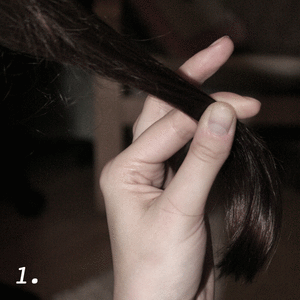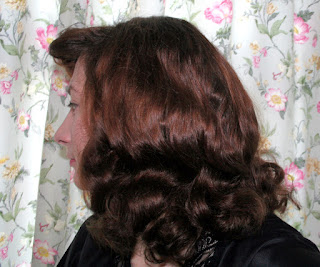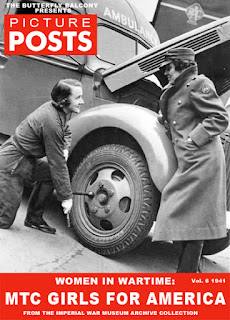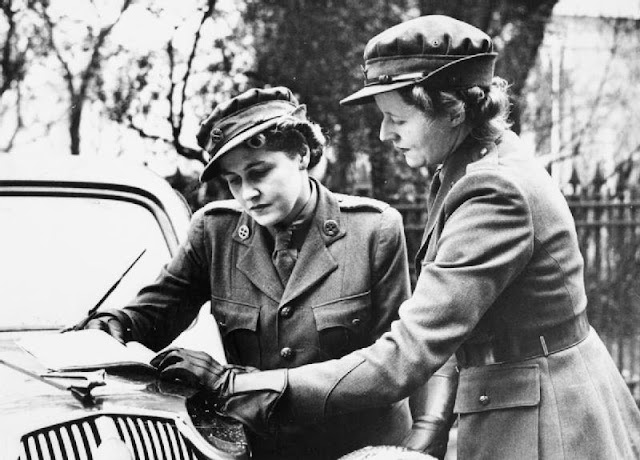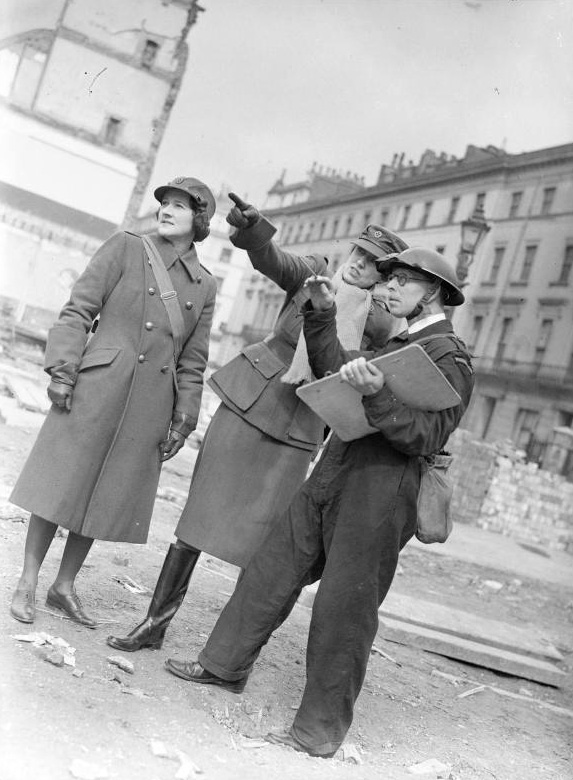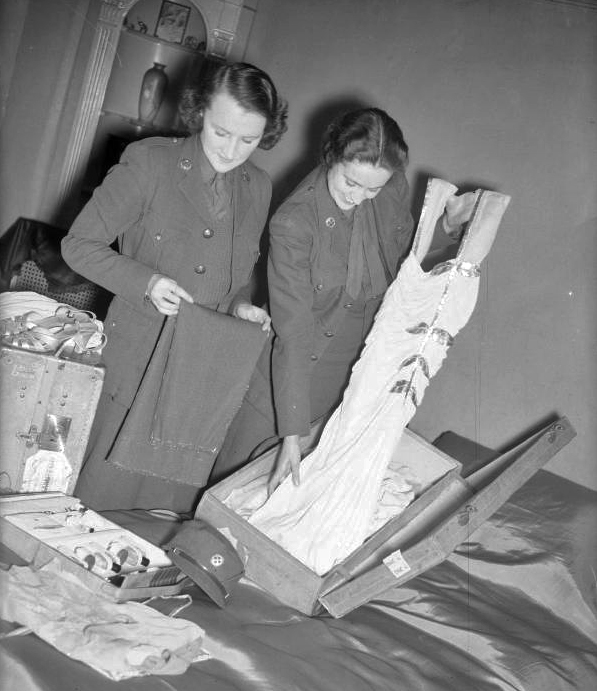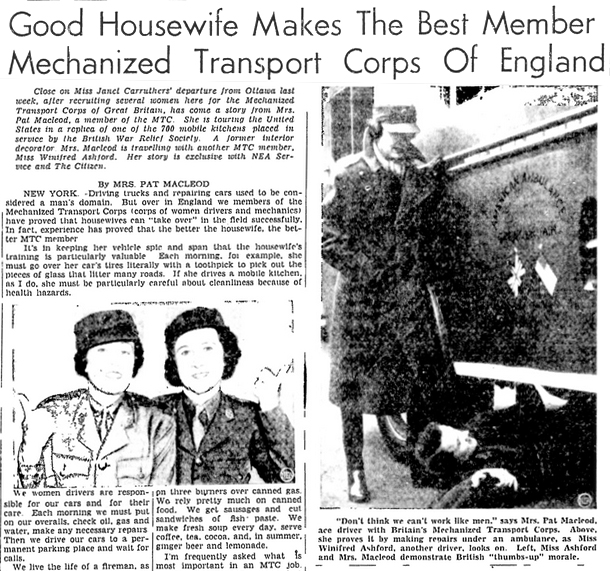When visiting my parents earlier this year, I found a bizarre looking tool whilst searching in hope for some long lost hair grips in my mum/grandma's old curler bag. I remembered having found it when I was a child and wondering then what the heck it could be... some torturous beauty device no doubt, perhaps for cleaning out your ears or plucking your eyebrows?
Well no. After 20 (alright 25) years later I have realised exactly what it is.
 |
This, in fact, my Grandmas pin curler tool. You could even say it's a family Hair-loum! I know, I'm hilarious!
|
Shamefully I've never been able to do a pin curl to save my vintage loving life. No matter how many attempts I have made, tutorials I've watched, I still remained all fingers and thumbs inept at the simple pin curl. I toyed with the idea of buying the fabulous new 'Sculpture Pin Curler' Tool, as it has had such wonderful reviews all over the web (
see Land Girl's review) but the price tag has put it out of my reach for now, anyway I had my Grandma's pin curler tool just sitting there unused and unloved for the last 70 years, it was about time I at least gave it a try.
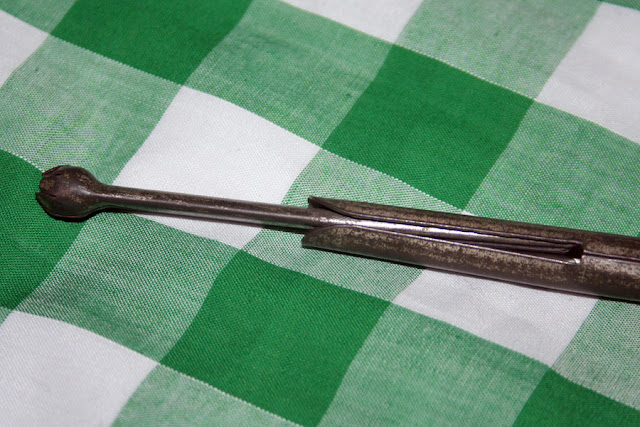 |
| You tuck the hair between the metal bar and the clip bit, so that as you roll the ends stay put, then once you've reached the top you slide the hair off and pin in place...well that's my best guess at how you use it anyway! |
Try I did. After a bit of practice, I found that it was very easy to use. The only problem was with my hair being super thick and quite long (even though I've cut 4" off recently), the curls it makes are very small and tight and so a pain in the derrière to pin to my head. Grandma always had rather short hair so it would have worked wonderfully for her, unfortunately, me and my thick hair were going to need something a little bigger in diameter.
|
|
1930's Photo of my lovely Grandma, with beautifully coiffured hair!
|
Looking at it I realised there is some thing very similar that most of us would probably have had in our possession at one point or another - most likely as a child, it would usually be decorated with a face, dress, and pipe cleaner arms, well in our house it was - It's a...
Ok, Ok, it's not mind-blowingly fabulous and I am sure I'm not the first to have thought of using it, but the humble Dolly Peg does make a perfect pin curler tool!
After a few attempts, I have it pegged! (the jokes are just getting better) So for the first time in my life, I can say I have a pin curled set that I am proud to be seen outdoors with! Another first is being able to do those volumising lifted curls, flat was all I could manage before and a bad straggly flat at that!
 |
| Not too dissimilar, I think you'll agree! |
I am sure most of you will not need any explanation on how to use it as it is super easy - not really any more difficult to use than a normal curler. But incase you do there is a quick tutorial below. I don't claim to be vintage hair blogger, my hair skills are bordering on the non-existent, but I can manage this. It does take a bit longer than I am used to with curlers but I am confident that will change with practice.
Personally, I think the benefits out weigh the extra time it takes. Being able to curl on damp hair and know it will be dry by morning (applies to lifted curls rather than flat, as the air can still get in to dry them out), which in my case means the curl lasts for days rather than hours. Also, they are very comfortable to sleep in, like resting your head on a fluffy cloud rather than sleeping on a pillow of pebbles.
~ DOLLY PEG PIN CURLS ~
You Will Need:
Setting Lotion or Mousse
Comb/Brush
Dolly Peg
Hair Grips (2 per curl) or Pin Curl Clips.
Note: You might find like I did, that you need to use a nail file to tidy the rough edges of the prongs, this will stop it catching on the hair when you're trying to remove your curl.
I would avoid conditioning your hair the wash before setting if possible, it makes the hair lovely and silky but a slippery nightmare to pin curl.
1. Apply your preferred setting agent to your hair. Take a section of hair, how much depends on you hairs thickness. If doing Lifted pin curls, like me, then make sure the section is no wider than the length of your hair grips, otherwise, it may slide
out.
2. Place the hair through the slot in the peg, slide down to the end of the section
3. Wrap ends around the peg and under the strand. Roll tightly until you are sure that it is secured. As with curlers, it pays to watch that the ends are tucked in nice and flat to ensure a smoother curl - I find this the trickiest bit!
4. Slightly more gently roll the peg up to your scalp.
5. Place your fingers either side of the curl to hold it in place whilst you twist the peg in the opposite direction to loosen the curl and release the peg. Slide the peg out. If the ends of the hair poke out when removing the peg then it's best to re-curl, fighting them back inside generally doesn't work, unless you're doing flat curls.
6. Stick your fingers in to hold the curl open, whilst you grab your grips/clips.
7. Pin to secure. Either by twisting so it lies flat to your head or as a raised curl as I have done by using 2 hair grips, one on either side.
Et Voila!
Simple right? Honestly, if I can do it, anyone can!
My hair is pretty much one length all over so I continued in my usual haphazard fashion all over my head always rolling under. My long - can't decide if I want to grow it or cut it - peekaboo style fringe, is usually a nightmare to get into a curler, so I rolled it into two separate pin curls at the top.
But after a good nights sleep and a damn good brushing, I think it came out alright. There's still a bit of a 'halo of frizz' my hair is prone to, though much less than with my normal roller set, and my fringe finally looks like it was intentionally curled rather than getting accidentally trapped in a roller! I brushed mine out with a basic cheapo paddle brush, as I have such frizzy hair I find the natural bristle ones create masses of static on my head, making me look like I have been electrocuted!











